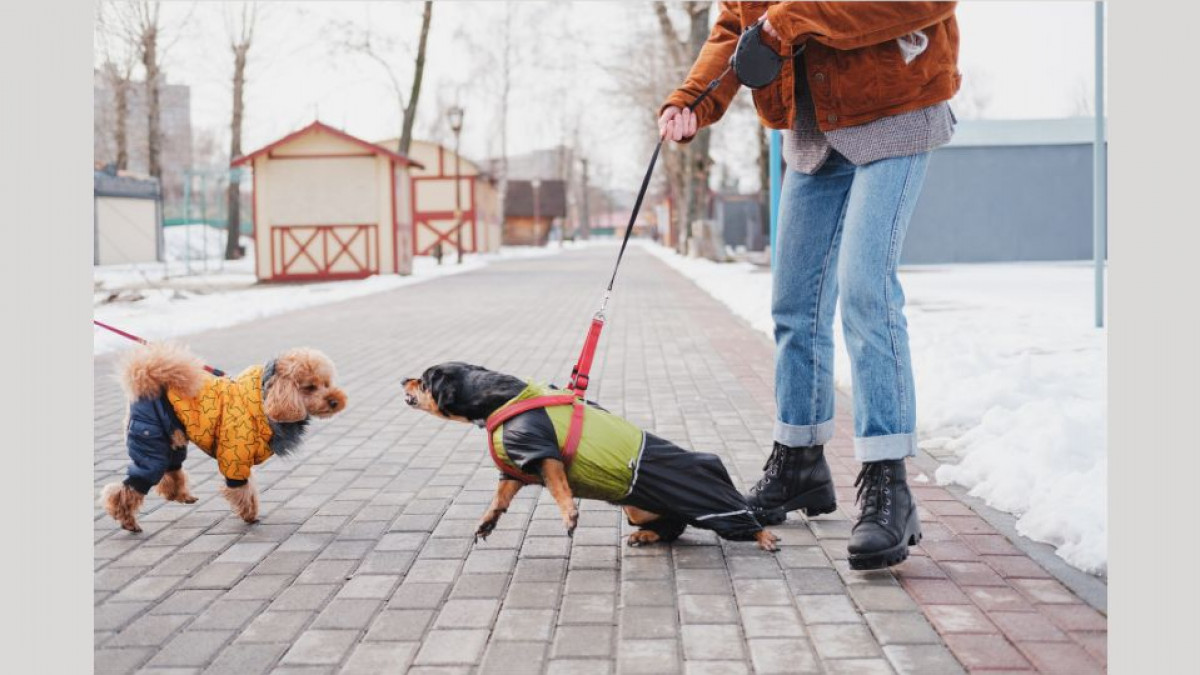Positive Dog Training & Behaviour Blog | Walkabout Canine Consulting
Unleashing your dogs potential, one concept at a time
Dog's Emotions

All is not lost if your dog is showing signs of anxiety, reactions and more.
Dogs, like humans, have a rich emotional life.
While they may not express emotions exactly in the same way we do, they are capable of experiencing a wide range of feelings. Some of the emotions commonly observed in dogs include:
Happiness and Joy: Dogs often express happiness through wagging tails, playful behaviour, and a relaxed body posture. You may see your dog vocalize with barks or yips when excited.
Fear and Anxiety: Dogs can experience fear and anxiety in response to various stimuli, such as loud noises, unfamiliar environments, or separation from their guardians. Signs of fear and anxiety may include trembling, hiding, pacing, panting, or excessive barking.
Sadness and Grief: Dogs are known to mourn the loss of loved ones, including human family members or animal companions. They may exhibit signs of sadness, such as decreased appetite, lethargy, or seeking comfort from their guardians.
Anger and Frustration: Dogs can feel anger or frustration when they encounter situations that challenge them or prevent them from getting what they want. This may manifest as growling, snapping, or destructive behavior.
Affection and Love: Dogs form strong emotional bonds with their human companions and other animals in their lives. They often demonstrate affection through cuddling, licking, and seeking physical closeness.
Curiosity and Excitement: Dogs are naturally curious animals and may show excitement when exploring new environments, meeting new people or animals, or engaging in novel activities.
Contentment and Relaxation: Dogs experience moments of contentment and relaxation when they feel safe, secure, and comfortable in their surroundings. They may lie down, close their eyes, and take deep breaths to signal their relaxation.
Understanding and acknowledging the emotional capacity of dogs is essential for building strong bonds with them and providing for their overall well-being. By recognizing and responding to their emotions with empathy and care, we can help ensure that dogs lead happy, fulfilling lives as valued members of our families.
The prevalence of anxiety and fear in dogs is significant, with many dogs experiencing these emotions at some point in their lives. Here are some key points highlighting their prevalence and impact:
Common Triggers: Anxiety and fear in dogs can be triggered by various factors, including loud noises (such as thunderstorms or fireworks), unfamiliar environments, separation from their owners, past traumatic experiences, lack of socialization, and changes in routine or environment, medical conditions, discomfort from medical issues.
Behavioral Signs: Dogs exhibit a range of behavioral signs when experiencing anxiety and fear, including trembling, panting, pacing, whining or vocalizing, hiding, excessive licking or chewing, drooling, shaking, and attempting to escape or flee from the perceived threat.
Health Implications: Chronic anxiety and fear can have negative effects on a dog's overall health and well-being. Prolonged stress can weaken the immune system, making dogs more susceptible to illness and disease. It can also contribute to digestive issues, skin problems, and exacerbate pre-existing medical conditions.
Impact on Behavior: Anxiety and fear can significantly impact a dog's behavior, leading to destructive behaviors (such as chewing or digging), aggression (towards other animals or humans), inappropriate elimination (house soiling), compulsive behaviors (such as excessive licking or tail chasing), and difficulty with training or obedience.
Quality of Life: Dogs experiencing chronic anxiety and fear may have a reduced quality of life, as these emotions can interfere with their ability to engage in normal activities, enjoy social interactions, and feel comfortable and secure in their environment. This can lead to decreased confidence, reluctance to explore new environments, and a diminished sense of well-being.
Interference with Human-Canine Bond: Anxiety and fear in dogs can also strain the bond between dogs and their human caregivers. When dogs are unable to trust or feel safe around their owners, it can lead to communication breakdowns, increased stress for both parties, and a decrease in the overall quality of the relationship.
Overall, addressing anxiety and fear in our dogs is essential for promoting their physical and emotional health, enhancing their quality of life, and strengthening the bond between dogs and their human companions. By recognizing the signs of anxiety and fear and implementing appropriate management and treatment strategies, guardians can help their dogs feel more secure, confident, and content in their environment.
There are lots of easy ways to help your dogs feel better with simple steps by getting them moving with fun and low-stress exercises. If walks are stressful then you will want to change how your dog participates in exercise you can help your dog feel better about walks. Foraging has been shown to influence your dog's positivity bias which relieves stress. Ditch their bowl and use their kibble for fun and games, learning, finding, and exchanging for their toys.
In conclusion, the collaboration between guardians, behaviour consultants and veterinarians is essential for recognizing and addressing a dog's emotional needs. By working together, everyone can provide the support, guidance, and care necessary to promote the emotional well-being of dogs and strengthen the bond between humans and their canine companions.
We shouldn't ignore a dog's anxiety; it's our responsibility to help them feel better and facilitate positive changes and we absolutely can do this easily. Leaving them to suffer from anxiety isn't acceptable; it's a welfare issue that demands our attention and action.
Reach out and learn how I can help you and your dog.
Categories: : behaviour modification, dog training, dogbehavior, helping anxious dogs, helping reactive dogs, my dog has anxiety, my dog is anxiety
 Sylvia Koczerzuk Koczerzuk
Sylvia Koczerzuk Koczerzuk 
